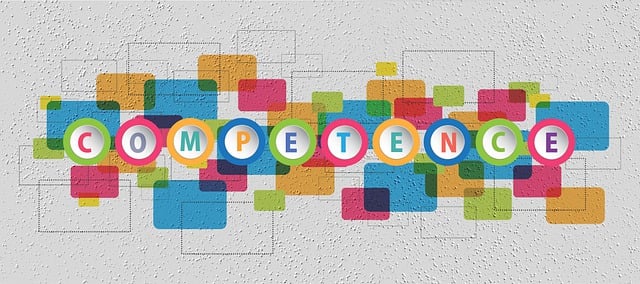Medical Improv as a Way to Promote Dignity in Healthcare

Experiential activities adapted from theatre education and improvisation are a form of Medical Improv. They become a part of this emerging field when used to address goals or outcomes we seek in healthcare. There are literally hundreds of experiential activities and variations that can be used to teach communication-related skills and improve healthcare outcomes. Critical outcomes such as patient safety, patient experience, workforce health and wellbeing and even cost-effectiveness. That’s because improving theses skills helps us become our best selves which impacts all of our relationships, are ability to work in teams and lead all of which in turn impact outcomes. Why Status Activities? One branch of activities developed by improvisation guru, Keith Johnstone refers to status activities. In theatre, these activities help actors make scenes more interesting for audiences. While Johnstone’s legendary book, Impro is directed towards actors, the chapter on ‘Status’ is fascinating for anyone interested in human behavior. In healthcare, status activities offer great opportunities to discuss dignity and hierarchy. Dignity for our patients, families, colleagues, and selves, healthy vs. toxic hierarchy, and their interrelationship. These activities, when facilitated properly, provide experiences where participants become more aware about how high/low status and dignity look, sound, and feel. This awareness then becomes a door to talking about our healthcare hierarchy in constructive ways while coming from a place of dignified interconnectedness! All in the spirit of mutual respect and co-creative problem-solving! Dignity Exchange My favorite activity is called Dignity Exchange, an activity created by Liz Korabek-Emerson, myself and our students. In short, with coaching, people walk around as if they are highly superior to everyone else. This is portrayed with body posture, facial expression, tone of voice, and an internalization of what it ‘feels’ like. From left to right: Susan Conboy, Robin Masia, Patricia Corso, John Klossner & Jody Fuller – Boynton Improv Education After they’ve spent a minute or so in high status, I invite them to shake it off. Then, with a similar process, they assume low status personas. This is followed with another invitation to “shake it off”. From left to right: Patrica Corso, Carolyn Vibbert, John Klossner, Glenna Kimball, Barbara Trimble, & Curran Russell – Boynton Improv Education It has always surprised me how little modeling or coaching people need to embody these ways of being. As if, somehow in our life experiences we know. Maybe we’ve been treated or treated others in such ways? Maybe both? And shaking it off can feel like a big relief! The coaching process now turns to language and modeling around self-respect and dignity. What does that look like? Sound like? Feel like? And people know this too! In general, it feels good! Once they embody a feeling of dignity, they pair up and face each other. One assumes high status while the other, low status. While facing each other and over the course of about a minute they switch status postures. Once that is done they are instructed to find the place where they feel dignity for themselves and each other. What happens next is incredibly inspiring and affirming for the best of humankind! Visceral Moments of Dignity These heartfelt moments between people are a privilege to witness. And as you can see in this pic, they show it in a variety of ways. It is, as if, we are tapping into a human quality that is already there. And in facilitating this activity we are reminded of what some of our best qualities are! From left to right: Liz Korabek-Emerson, Robin Masia, Beth Boynton, John Klossner, Lori Austin, Robin Masia, John Klossner, Curran Russell, Susan Conboy, Patrica Corso, John Klossner, & Glenna Kimball – Boynton Improv Education If you’d like to know more, please feel free to reach me: [email protected]. Also, this handout from an event with Human Dignity and Humiliation Studies a few years ago offers more guidance about teaching Dignity Exchange. And I happily invite you to explore a variety of Medical Improv resouces and the exciting new self-paced 3 Paths into practice!
Hope in the Fight for Breast Cancer

After having my first baby girl, I was young and didn’t exactly follow what my medical team recommended when it came to breastfeeding. As a result, some of my milk ducts became clogged and painful, and that first bonding experience became more of a chore than a joyful connection. Years later, the same milk ducts became infected and formed a lump that raised concern among my doctors. I eventually had a lumpectomy. Since then—thirty-five years ago—I’ve watched that same breast carefully, performing self-exams and getting annual mammograms. Thirty-five years of wondering, what if this turns malignant one day? kept me on my toes. Back then, a breast cancer diagnosis felt like a life sentence. But today, thanks to decades of tireless research and advances in treatment, the outlook has changed dramatically. We are living in a time of incredible progress and renewed hope. Each year brings breakthroughs that help people not just live longer, but live better, with strength, dignity, and quality of life. Today, over 91% of women are diagnosed with localized breast cancer—meaning the cancer hasn’t spread beyond the breast tissue. This word localized brings hope. It’s a sign of earlier detection and more successful treatments. Survival rates are climbing, thanks to better screening, personalized therapies, and constant, dedicated research. The word chemotherapy can still feel terrifying. But today’s chemotherapy isn’t what it used to be. It’s now often a gentler, more targeted treatment—designed to minimize side effects and preserve quality of life. We also have tools like genomic testing, which helps doctors avoid overtreatment, and immunotherapy, which boosts the body’s natural defenses to fight cancer more effectively. In my community, I see so many people continuing to live their lives with resilience and grace. I’m especially inspired by my students, showing up to yoga class, moving their bodies with purpose as if nothing is happening inside them. They remind me that life can be full and joyful, even during treatment. These newer treatments not only support the body through each step but also help ease the mind. With a stronger focus on mental and emotional well-being, we’re starting to shift our understanding of cancer from a terrifying diagnosis to something more akin to a chronic condition, like autoimmune disease. More people are outliving their prognosis and managing their health with a holistic approach that embraces both the body and the mind. Medical teams are even recommending complementary therapies such as energy healing, massage, yoga, and meditation. While some physicians may not openly talk about it, many incorporate holistic practices into their own lives. Research supports that these practices can enhance medical treatment by helping patients reconnect with themselves, mind, body, and spirit. With continued hope and new clinical trials on the horizon, the future looks brighter. I will keep monitoring my health, staying proactive with screenings, and doing my best to live a balanced, wholesome lifestyle—not just for myself, but for my loved ones too. If you’re in the middle of this journey, please know you are not alone. We’re all walking alongside you, fighting with you, hoping with you. Our collective wish is that one day soon, breast cancer becomes a manageable chronic condition—and no longer something to fear. Lean on your support system, whether it’s your family, your friends, or your care team. The cure is closer than ever. Letting go of fear entirely might not be possible, but knowing there’s a global community—scientists, doctors, survivors, and supporters—working around the clock to find a cure might shine just enough light to get you through today. Nameste, Shab
6 Communication, culture, and leadership issues that ensure qualified staff

Having unqualified people in jobs they should not be in is not an issue about diversity, but rather one of communication, culture, and leadership. Here are six related issues that influence the likelihood that qualified staff are in positions that require high reliability: 1. Leaders and staff are skilled at giving and receiving constructive feedback so that teaching and learning are going on all the time. 2. All levels of staff are willing and able to ask for help, set limits, delegate tasks or say “No” when they need to. 3. All levels of staff are respectful of others’ limits, and leaders respectfully address patterns of excessive need for help, time management, and training needs on an individual by individual. Image by Ahmad Ardity from Pixabay 4. Expectations for performance are clear and consistent. 5. Leaders advocate for and ensure the resources necessary to follow protocols, procedures, and policies are available (incl: staff, time, money, training, and equipment). 6. Evaluations of performance are objective, fair, respectful, and intended to ensure high reliability. Identifying underperforming or unqualified people need not be a personal affront and can include support in finding an appropriate job match. Can you think of any other issues as viewed from this lens?
Economic Burden of Cancer on American Families

In the previous blogs, we’ve explored the emotional and psychological impacts of cancer on families, delving into how the diagnosis and treatment affect their mental health. Today, we turn our attention to another critical aspect: the economic burden of cancer on American families. The financial impact of cancer can be as devastating as the illness itself. A Forbes article underscores how cancer treatment costs can severely affect family finances and future economic stability. From the high costs of medical treatments, hospital stays, and medications to indirect expenses like travel, lodging, and lost income, the economic strain can be overwhelming. This financial stress often compounds the emotional burden, leading to a cycle of anxiety and distress that affects the entire family. In my 25 years as a radiation therapist, I have seen countless families struggle to manage the costs associated with cancer treatment. Insurance coverage often falls short, leaving families to cover substantial out-of-pocket expenses. Many are forced to make difficult decisions, such as depleting savings, taking on debt, or even delaying or forgoing essential treatments due to cost. One family that comes to mind is that of Maria, a single mother diagnosed with breast cancer. Maria’s treatment required frequent trips to the hospital, time off work, and costly medications. Despite having health insurance, the co-pays and uncovered expenses quickly mounted, forcing Maria to dip into her modest savings and rely on credit cards. The financial strain added to her stress, making it even harder for her to focus on her recovery and care for her two young children. The economic burden of cancer extends beyond immediate medical costs. Families often face long-term financial challenges, including reduced earning potential, ongoing medical expenses, and the psychological toll of financial stress. These issues highlight the need for comprehensive support systems that address the economic as well as the medical and emotional needs of cancer patients and their families. As we continue this blog series, I will further explore the multifaceted impact of cancer on families, shedding light on their stories and advocating for more robust support systems. Through these reflections, I hope to inspire greater awareness and action towards alleviating the financial, emotional, and psychological burdens faced by those affected by cancer.
